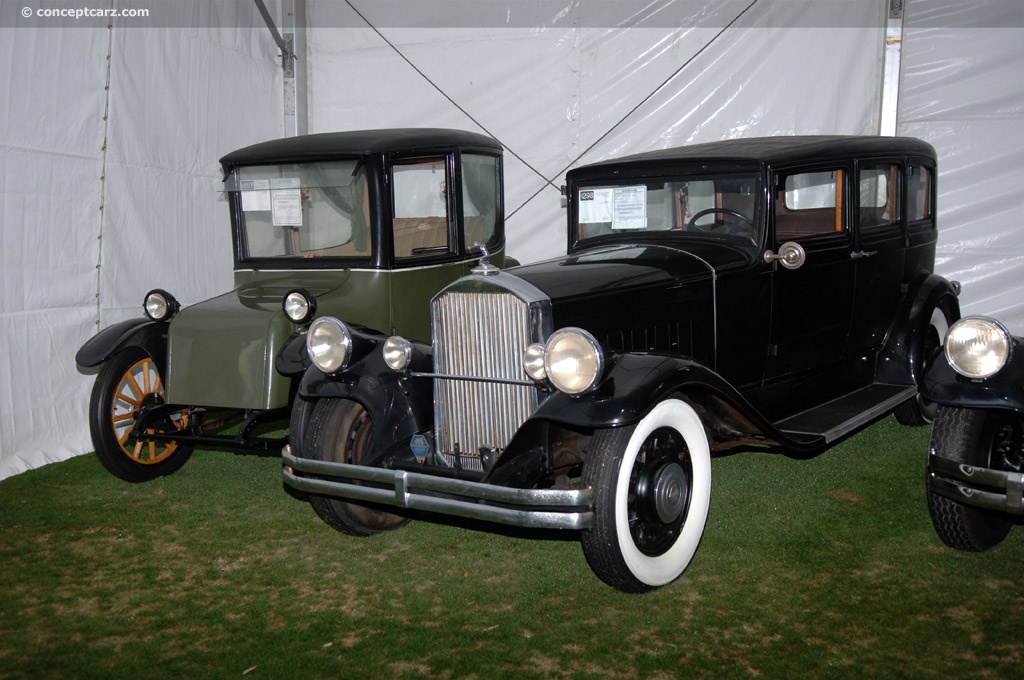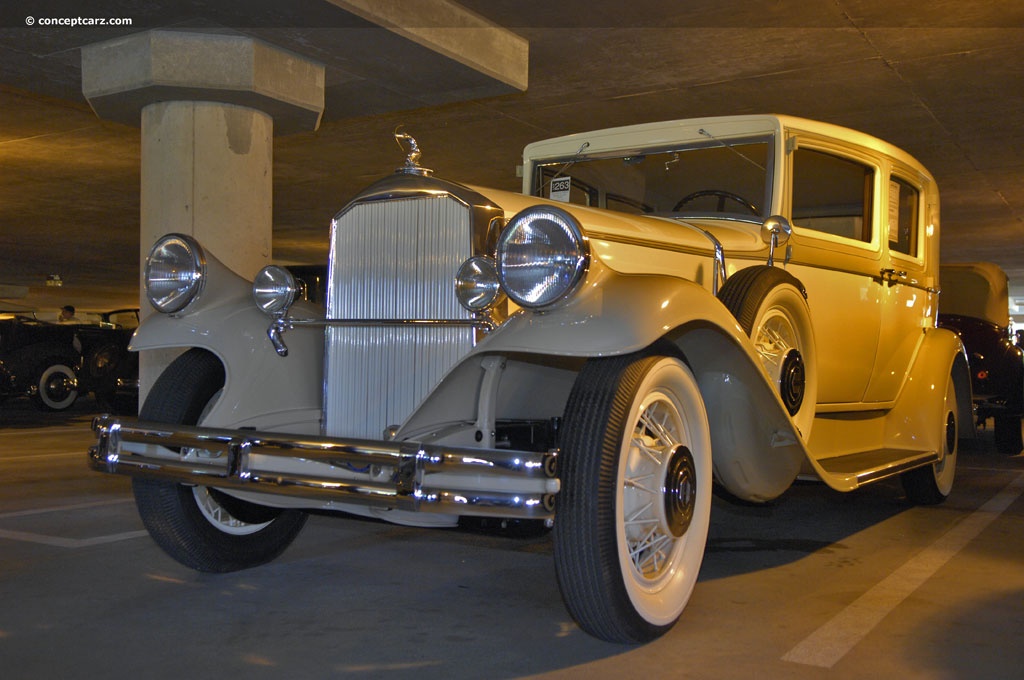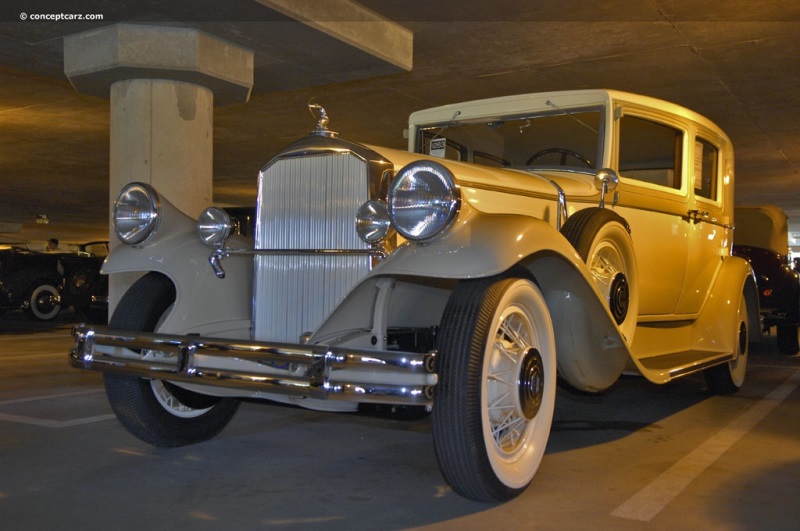The George N. Pierce Company was formed in 1872 and by 1896 the company began producing bicycles. By the turn of the century, the company was experimenting with automobiles, initially with steam power, and the early years saw rapid advancements. The early single and twin-cylinder Motorette designs were followed by larger, more luxurious cars for an upscale market. 
Club Sedan
View info and historyIn 1904, Pierce introduced the 'Great Arrow,' which was a major departure from his earlier designs. In the front was a powerful four-cylinder engine, and the Great Arrow quickly solidified the company's reputation by winning the Glidden Trophy in 1905. The Glidden Tour was an endurance run of over a thousand miles with the trophy being awarded to the most roadworthy car on the tour. Percy Pierce drove a 'Great Arrow' to victory in the Glidden Trophy for five consecutive years, showcasing the automobile's reliability and ruggedness. Pierce sold the rights to the business in 1907, and the company was renamed the Pierce-Arrow Motor Car Company in 1908. The introduction of a six-cylinder engine would become the hallmark of Pierce-Arrow for many years to come, and helped the company prosper and grow over the years. The company would later produce commercial trucks, motorcycles, and fire engines. Pierce-Arrow pioneered the use of aluminum, power brakes, hydraulic tappets, and several other innovations. Despite the high degree of technological sophistication and elegant automobiles, Pierce-Arrow lacked the funding to continue development. By the end of the Roaring Twenties, the company's engineering and designs had seemingly become dated. 
Club Sedan
Chassis #: 1501359
View info and history
Auction entries : 1The Studebaker Corporation of South Bend, Indiana, gained control of the Buffalo firm in 1928. This union would last for five years with moderate benefits to both companies which continue to operate as separate entities although they shared a dealer network, as the cars were sold through Studebaker dealerships. Pierce-Arrow introduced a new line of cars in 1929. The cylinder wars were heating up and the Great Depression was lurking just around the corner. The new Pierce-Arrows became a great success, setting a new sales record of nearly 10,000 cars in 1929. With financial and mechanical help from Studebaker, Pierce-Arrow was able to retire the six-cylinder engine and introduced a newly developed L-head straight-eight engine in 1929. It had a 366 cubic-inch displacement and was rated at 125 horsepower. The 1928 Series 36 and 81 Models had a T-head engine with a cast steel block bolted to an aluminum crankcase. The new L-head eight-cylinder engine had nine main bearings and was cast with a single crankcase and cylinder block assembly. It breathed through a Stromberg UU-2 carburetor rather than a carburetor of Pierce-Arrow manufacture, like earlier models. The 1931 Pierce-Arrow Model 43 was powered by a 366 cubic-inch eight-cylinder engine with a 3.5-inch bore, a 4.75-inch stroke, a 5:1 compression ratio, and produced 125 horsepower at 3200 RPM. It was backed by a three-speed manual transmission and rested on a wheelbase that measured 137 inches. Body styles included a 5- and 7-passenger sedan, a club sedan, and an enclosed drive limousine. 
Club Sedan
Chassis #: 1500108
Engine #: 225107
View info and history
Auction entries : 3
By 1933, the Pierce-Arrow was again in receivership and this time was rescued by a Buffalo businessman. This salvation was short-lived, as the independent luxury car segment had become too competitive, and by 1938, Pierce-Arrow had officially gone out of business and its assets were sold at auction.
by Daniel Vaughan | Jan 2020

Club Sedan
View info and history

Club Sedan
Chassis #: 1501359
View info and history
Auction entries : 1

Club Sedan
Chassis #: 1500108
Engine #: 225107
View info and history
Auction entries : 3
By 1933, the Pierce-Arrow was again in receivership and this time was rescued by a Buffalo businessman. This salvation was short-lived, as the independent luxury car segment had become too competitive, and by 1938, Pierce-Arrow had officially gone out of business and its assets were sold at auction.
by Daniel Vaughan | Jan 2020
Related Reading : Pierce-Arrow Model 43 History
The Great Depression was a very difficult economical time for the auto industry and nearly every other aspect of commerce. During this time, automakers did whatever they could to stay in business and revitalize sales. Prices were dropped, options were added free of charge, larger engines were fitted, and even lower priced vehicles introduced. Probably the hardest hit segment of the auto industry....
Continue Reading >>
Continue Reading >>
Similar Vehicles
Similar Automakers
Similarly Priced Vehicles
1931 Pierce-Arrow Model 43 Vehicle Profiles
Recent Vehicle Additions
Performance and Specification Comparison
Price Comparison
$3,325 - $3,995
$4,300 - $9,500
Model 43 Specification Comparison by Year
Year
Production
Wheelbase
Engine
Prices
Related Automotive News

Gooding & Company Presents the Estate of Mark Smith Auction, Entirely Offered Without Reserve, this April
The Estate of Mark Smith Auction will feature offerings, all without reserve, from the personal collection of the late Mark J. Smith, including largely original and unrestored Classic Era automobiles from Mercedes-Benz, Chrysler, Bentley, White, and...

Past Best of Show Winners at The Pebble Beach Concours d'Elegance
overview1
The 70th anniversary of the Pebble Beach Concours dElegance was celebrated with a spectacular display of previous Best of Show winners. Thirty-seven examples graced the showfield and many were still with the same owners who raised the trophy...

Golden Years of Can-Am Racing Showcased at 2016 Rolex Monterey Motorsports Reunion
MONTEREY, Calif. March 9, 2016 — Known for its excess is barely adequate reputation, the Can-Am Series was known for its free-wheeling rule interpretations that brought experiments such as big wings, two engines, ground effects, perfecting turbocharging...

1964 Nurburgring 1000 Kilometers: Survive for One Last Victory
During the late 1950s, Richie Ginther would begin a relationship with John von Neumann and this partnership would result in one of the most dominant periods of American sportscar racing in which Ginther and Porsche would be virtually unbeatable. Nearly...

The Champion in Touring Car Racing : The BMW M3
In August 1985, a rumour surfaced in motor magazine Auto-Deutschland which emanated from a new sports car. An A Group Car from BMW that was a thoroughbred racing car according to the rules but was also to be produced in a version licensed to drive on...





































